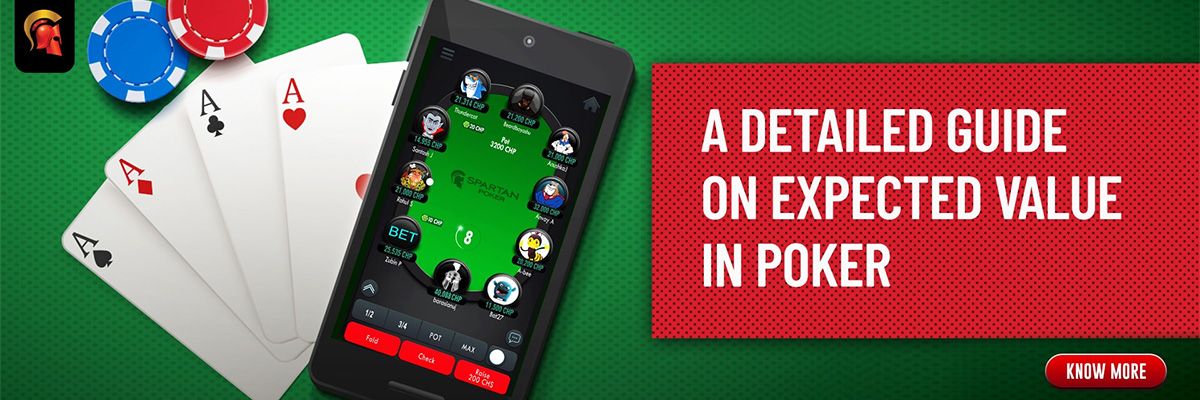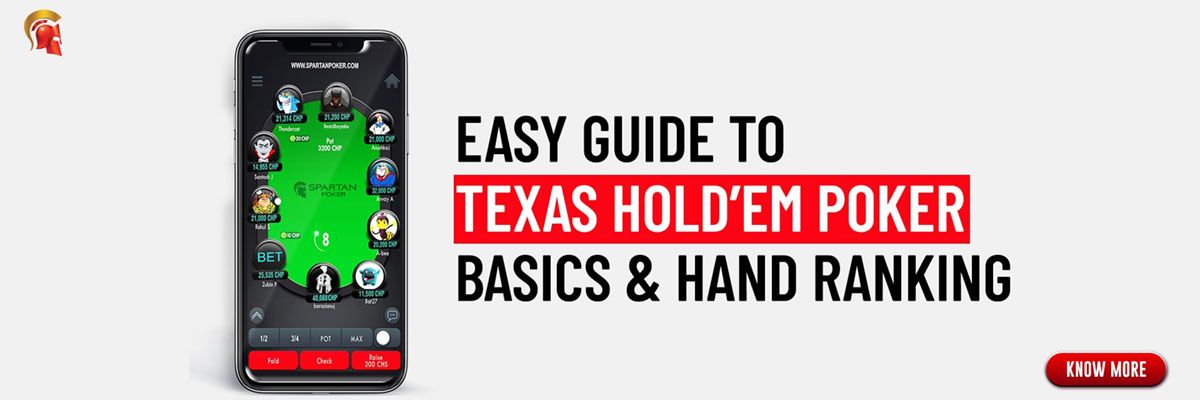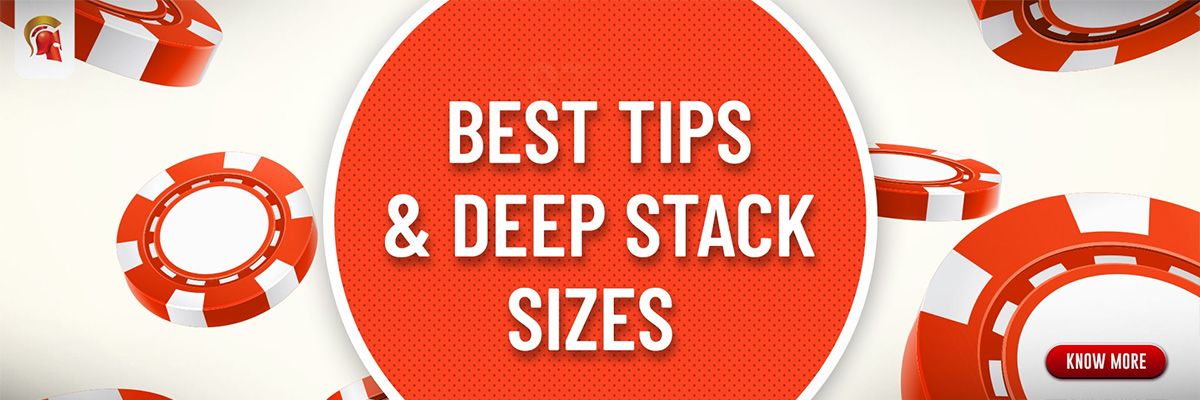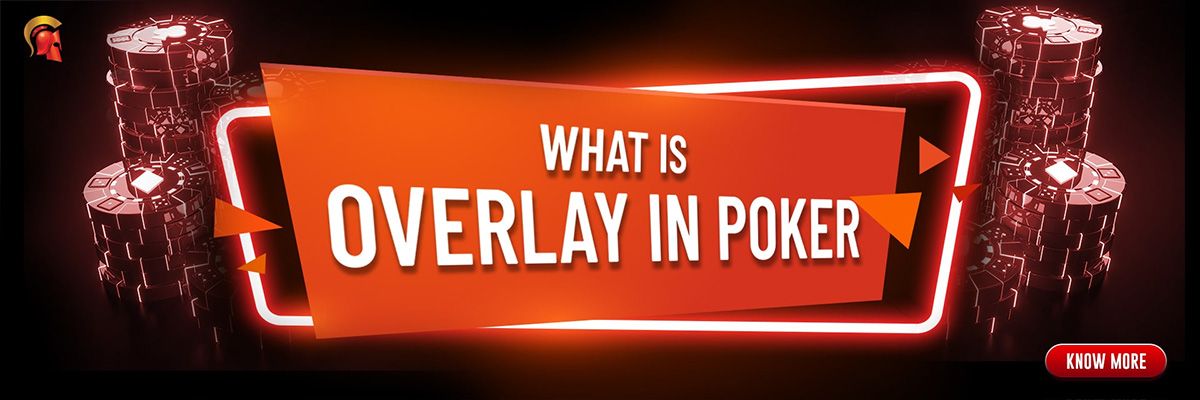An Introduction to EV in Poker
How long have you been playing poker? If you are fairly new to this fascinating game, you will soon realize that it is all about making money at the end of the day. There may be days when you make all the right decisions, but still do not end up winning. However, this is possible only in the short term. If you consider long term, then, you will end up winning more by taking the right decisions that ensure a positive EV Poker (Expected Value) for you.
Now, what is expected value in poker? Before we check this out, do remember that poker is a game of probability where there are various outcomes possible, and no amount of strategy or analysis can help you get the exact outcome every time. However, it is possible to have the desirable outcome more number of times by applying the relevant strategy (for betting and gameplay) when you play for a long period of time. Whenever it is your turn to decide the next move in poker tournaments, there are always multiple options in front of you. You have to weigh in the risk involved with your next move based on the chips stack size you have, the type of opponents, the stage of the game, etc., and measure it against the expected returns you can gain. The concept of expected value in poker helps you to take smart decisions about these moves.
Let us now deep dive further and understand the meaning, importance and use of EV in poker.
Understanding EV Poker
As explained above, Expected Value (EV) is a concept which is pretty useful in poker – considering the unpredictable nature of possible outcomes. It is not about the outcome of one particular game or a few games only. EV refers to the consideration of average outcome of a particular move (scenario) giving you specific returns against the occurrence of that scenario for a large number of times (minimum hundreds of times). So, you can relate it to the average amount of money you can win or lose on your bet, if it were made for hundreds of times.
What do you play poker for? To earn money at the end of it, right. Of course, you enjoy the fun and the excitement that this game brings to the table. Now, to earn money in the long run, all you have to do is take decisions (for your moves in real game time) with positive expected value (+EV). If you manage to do that, you will be in profits in the long run, despite having some bad days and more number of good days along the way.
Because of this concept of EV, each decision made by you at the poker table can be classified into:
• Positive EV (or +EV) – this one will ensure you make money in the long run
• Negative EV (or -EV) – this one will make you to lose money in the long term
Now, let us consider an example to understand this further.
Scenario#1:
Say we flip a coin and you simply have to decide the outcome – whether it is going to be ‘heads’ or ‘tails’. If heads comes up, you will get $1 and you would earn nothing if tails comes up. Say we do this coin flip 10 times, what could be the expected value in this case?
Here, there is a 50% probability of heads turning up and a 50% probability of tails turning up. So, you have a 50% chance of winning $1 for every coin flip. Based on these factors, there is a strong possibility of you getting 5 guesses right and 5 guesses wrong, i.e., ‘heads’ turns up only 5 times out of the 10 times when the coin was flipped.
For such a scenario, you would have earned $5 for the 5 times when ‘heads’ turned up. So, your total profit comes to about $5 when you participated in 10 coin flips. It can be stated that you made a profit of about $0.5 per hand. This means that the EV in this case was positive and equal to +$0.50 for every coin flip.
How did we manage to arrive at this figure? Well, because we repeated the scenario of heads coming up for numerous times (10 times). In reality, the scenario has to be repeated for an infinite number of times to get equal number of heads and tails. And this is how we are able to use it to calculate (find out) the average outcome for the particular scenario.
To arrive at the accurate EV for our scenario, we need to multiply the probability of each possible outcome (heads / tails) with the corresponding payout that was decided.
For heads, you were to earn $1 and the probability of it occurring was 50%. And for the other possible outcome (tails), you were to earn $0 against the probability of 50%.
Now, the expected value for coin flip =
[(Probability of Heads)x(Payout for Heads) + (Probability of Tails)x(Payout for Tails)]
=[(0.5)x($1) + (0.5)x($0)]
=$0.5
Thus, we got, EV (coin flip) = $0.5
To understand the poker EV formula better, let us consider another scenario.
Scenario#2:
Say you put a bet (wager) of $0.25 on every coin flip for the above scenario that we just discussed. Do you think that with the odds remaining the same, you will be able to win more or have a greater expected value by adding your bets? Let us find out.
The addition of fixed bet amount will mean that for every win, your effective earning will be $0.75 ($1 - $0.25). For every tails, you will lose $0.25 ($0 - $0.25). The probability of 50% remains the same as earlier.
So, as per the expected value formula, we will have:
[(Probability of Heads)x(Payout for Heads) + (Probability of Tails)x(Payout for Tails)]
=[(0.5)x($0.75) + (0.5)x(-$0.25)]
= $0.375 – $0.125
= $0.25
Thus, the EV (for coin flip) = $0.25 in this case when you are betting some money ($0.25) on every flip of the coin. This EV is still positive.
This is what happens even on the poker table, where you have to place your bets and the EV helps you to take appropriate decisions at various stages.
Focusing on Positive Expected Value
The above discussed scenario (related to coin flip) is one of the simplest examples that shall bring more clarity on how the concept of expected value in poker works out. Are you able to relate this to the game of poker? The above derived formula for EV poker will help you to calculate the EV for every decision during gameplay in poker. And you simply have to go ahead with the moves / bets that have +EV, as that is where the money shall come from (on most occasions).
Remember that good players of poker will stick to this practise of using bets associated with +EV. They may lose in the short term, but they are most likely to gain (win) in the long run. This is because there is a possibility that your best hand can at times end up on the losing side as the actual outcome may deviate from what the odds indicated.
For a game of Texas Hold’em, a pair of aces is considered to be a favorite majority of the times (say 80%) against a pair of kings pre-flop. But this also means that there is a small chance (say 20%) for the pair of kings to win. But, does that mean that you should bet on the pair of kings every time. Not at all – instead betting continuously on the pair of aces for a high number of Hold’em games will always be with a positive expected value (+EV).
Remember that the poker pro players will always focus on making decisions with profitable EV, instead of trying to control the outcome of every hand and winning every hand. Adopting this approach will help you to win more money in poker in the long term!
Extracting Most Value out of Hands with Expected Value
As we have discussed thus far, the expected value concept enables you to extract maximum value from every hand considering multiple outcomes possible. It goes a long way in ensuring that you get the chance to get maximum value out of your hand when you are leading and ensure you lose minimum when you are behind. It gives you a fair evaluation of the risk involved with your bet, against the possible payout and the probability involved. So, even when you are thinking about trying out a bluff (especially when you are sitting on large sized chips stack), this EV concept helps significantly. In simple words, the risk associated with bluff is considered into the calculation of EV.
The Verdict
The concept of expected value helps you to simplify the poker game and related decision making by providing you with the average outcome with a large number of occurrences of the event. The calculation to arrive at the EV is mathematical and may seem complex, but, if you use the formula and are clear about the number of outcomes possible, along with the probability of the outcomes appearing, you will be able to crack this concept with ease.
One critical thing to remember is to go ahead with your play which are associated with positive EV. This will ensure that you are profitable in the real long term. And most successful poker players adopt this approach. So, if you wish to be a poker champion, you need to have EV concept in your strategic scheme of things. Try it out by downloading the Spartan Poker app online and start playing a series of poker games to evaluate if you are able to emerge as the winner with positive EV decisions in the long term!

















